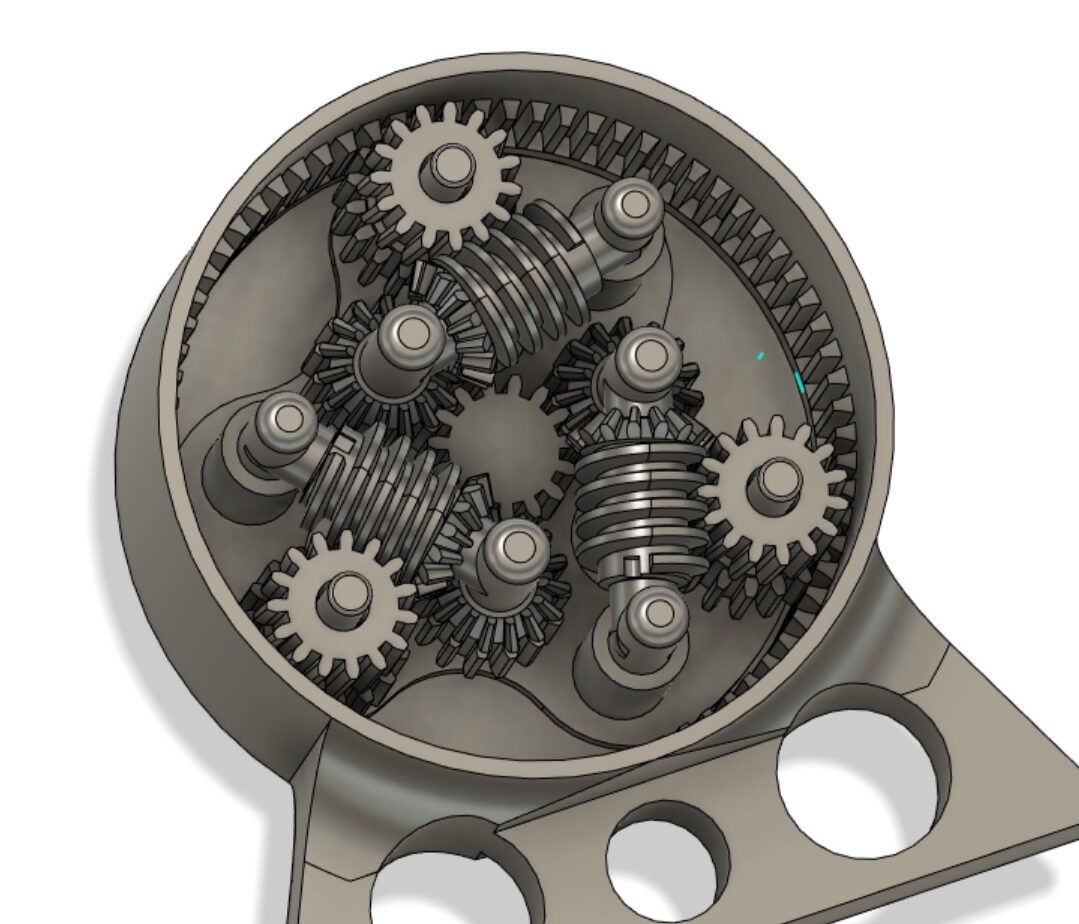Personal
Hybrid Planetary-Worm Gearbox Design

Description
In the evolving world of mechanical design, the Planetary-worm Gear Box stands as a testament to innovative engineering. In my freshman year at the university, I undertook a project to create a gearbox, seamlessly merging the efficiency of planetary gears with the precision of worm gears.
In my freshman year at the university, I undertook an innovative endeavor to reinvent the conventional planetary gearbox. Drawing inspiration from the traditional mechanism, my intention was to amalgamate the efficiency of a planetary system with the precision and compactness of worm gears.
Objective: The aim was twofold:
- To devise a compact gearbox that could provide a high gear reduction.
- To engineer a solution that could maintain its position without the continuous expenditure of power.
Methodology:
Planetary Gear System Base: The foundation of my gearbox was derived from the tried-and-true planetary gear setup, known for its balanced torque distribution and compact form factor.
Integration of Worm Gears: On top of the planet gears, I integrated a pair of worm gears. Not only did this enhance the design’s space efficiency, but it introduced the key feature of being non-back drivable. This meant that the gearbox could resist reverse rotation, enabling it to hold its position without any active input or additional power.
Results: The outcome was a highly efficient, compact gearbox system capable of delivering a remarkable 60:1 gear reduction. This metric was especially noteworthy given the gearbox’s size.
Conclusion: While the gearbox may seem intricate at first glance, its design philosophy was rooted in smart engineering choices. By leveraging the strengths of both planetary and worm gear systems, I was able to craft a solution that optimized for space, power conservation, and gear reduction, demonstrating that the amalgamation of different mechanisms can lead to groundbreaking innovations.
